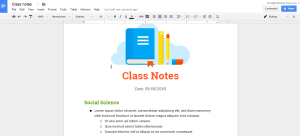 On of the most influential ideas about learning to emerge in the last century was Lev Vygotsky’s observation that all learning is first social, and then individual. Unfortunately he used the rather cumbersome term proximal zone of development to describe this gap between what someone knows or can do with the help of others, and what they can do on their own. ICTs offer a number of affordances for helping to bridge the proximal zone of development, and as such are formidable learning tools in their own right, but they also point to how ICTs can be used as cognitive tools to enhance social thinking.
On of the most influential ideas about learning to emerge in the last century was Lev Vygotsky’s observation that all learning is first social, and then individual. Unfortunately he used the rather cumbersome term proximal zone of development to describe this gap between what someone knows or can do with the help of others, and what they can do on their own. ICTs offer a number of affordances for helping to bridge the proximal zone of development, and as such are formidable learning tools in their own right, but they also point to how ICTs can be used as cognitive tools to enhance social thinking.
ICTs are communication devices par excellence. They allow people who have never met to share ideas and passions, whether via email listervs, forums or Google hangouts, for example. They enable communities with shared interests to share ideas and collaborate on projects. These communities of practice are often very nurturing places where beginners are mentored and helped, and in turn, as they gain experience, can assist others. When I was learning to program in php, for example, I sought out an online forum where I could post problems I was having with the code I was writing. Perfect strangers took the time to make suggestions, to point out errors in my code, and to help me learn. In return I tried to answer queries from those with less experience than I had. The Internet gave me access to mentorship that would not have been available otherwise. I note that my son, who composes music, uses Sound Cloud in a similar way. While he was preparing for his matric exams he also used Google docs to create and share study notes with his class mates.
I would like to look at two ways in which these ideas could be harnessed for the classroom.
Personalisation By Pieces is a programme developed by Dan Buckley, which uses peer assessment to encourage mentorship and assessment. In essence the system works on a student being assisted and assessed by a more experienced peer – one who has already been credited with a skill. Once they themselves have been accredited, they too can help those below them on the skills ladder. Some Learning Management Systems, such as Moodle, have peer assessment modules which might be used to facilitate this process, but Google docs could probably be used just as effectively. The teacher would be required to create a skills ladder, a list of sequential skills leading to mastery. Students would need to submit documentary proof that they have mastered a level. Peers who are a level or two above would be responsible for accrediting this proof, and for creating criteria for this assessment.
 Social Media also offers fertile grounds for social learning strategies by creating forums for communities of practice to flourish within the school. Students tend to use Whatsapp for this kind of thing, but teachers could encourage a more formal collaboration by sharing a Google doc or wiki on a particular topic and requiring students to contribute to its maintenance. All these measures help students move from social collaboration towards personal mastery. I suspect that it works best though when it is informal and student directed, but if carefully scaffolded you can bring a majority of students on board. They make a pleasant change from individual worksheets, and I find students appreciate the idea that by collaborating on a set of notes on a Shakespeare play, for example, they are saving themselves effort, and benefiting from the combined effort.
Social Media also offers fertile grounds for social learning strategies by creating forums for communities of practice to flourish within the school. Students tend to use Whatsapp for this kind of thing, but teachers could encourage a more formal collaboration by sharing a Google doc or wiki on a particular topic and requiring students to contribute to its maintenance. All these measures help students move from social collaboration towards personal mastery. I suspect that it works best though when it is informal and student directed, but if carefully scaffolded you can bring a majority of students on board. They make a pleasant change from individual worksheets, and I find students appreciate the idea that by collaborating on a set of notes on a Shakespeare play, for example, they are saving themselves effort, and benefiting from the combined effort.
I believe that once we start to explore the idea of using social learning in the classroom through ICTs we will begin to unleash much of the hidden power of learning that often lies dormant in our schools.

